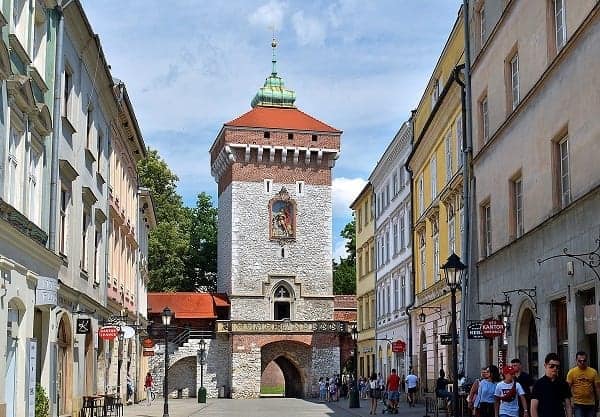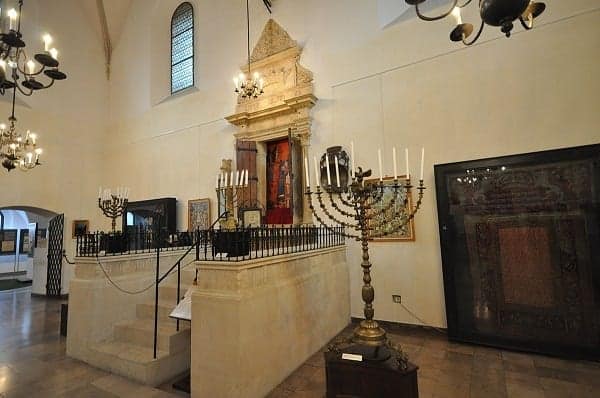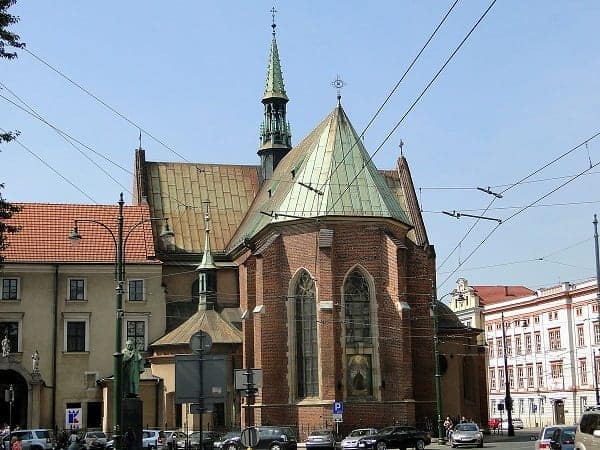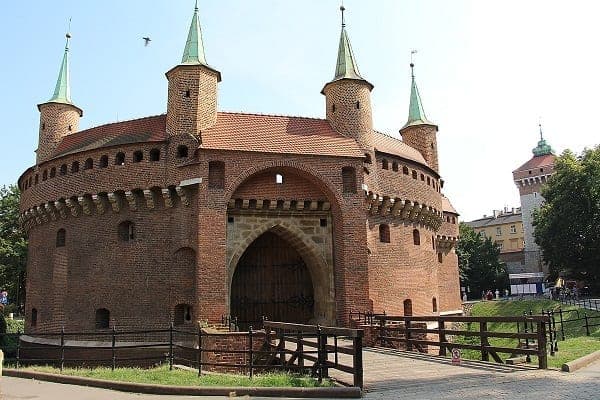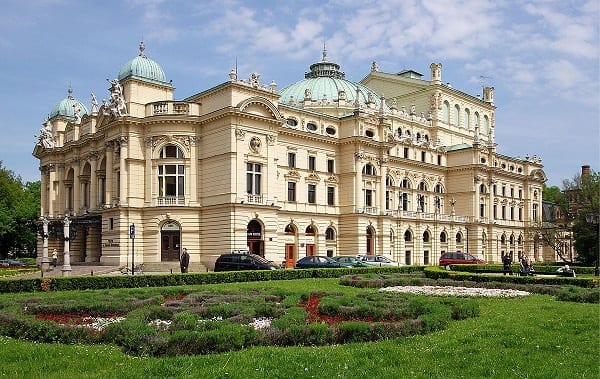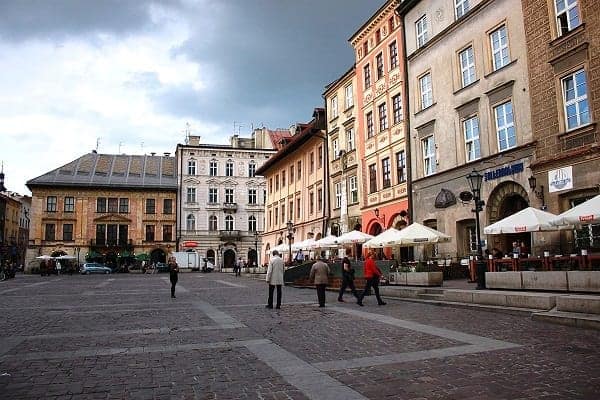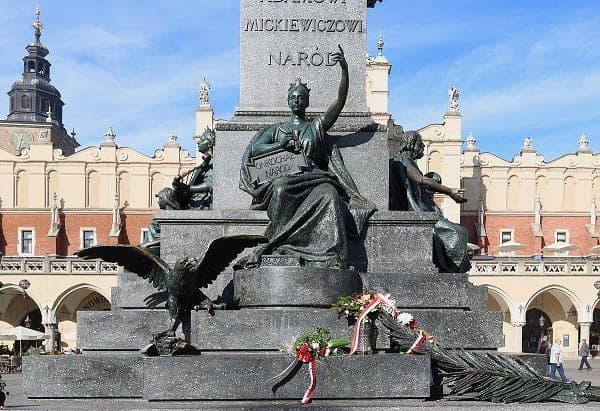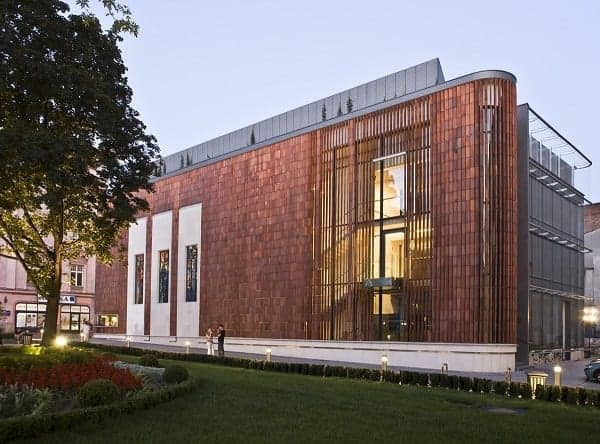This post lists the best free walking tours you can take in Kraków, that cover the Old Town, the Jewish Quarter as well as other subjects and locations.
Krakow is one of the most historic cities in Poland, and there are a lot of notable sites to see and learn about while you’re in the area.
And, in the video below, local tour guide Bart takes you on a virtual walking tour of the Old Town.
One of the most popular subjects to cover is Krakow’s history with Communism and what happened here during WW2.
There are also tours of the Jewish Quarter and its history both before and after those events.
The best thing about all of these services is that they are all free to enjoy!
Free walking tours are run on a pay-what-you-like basis.
You don’t need to pay anything upfront and can pay what you feel the experience was worth with the local guide.

We suggest €5 to €15 per adult if you enjoy your walking tour.
Keep in mind that while free walking tours are incredibly convenient and budget-friendly, the groups can be quite large.
If you want to have a more personal experience and be able to have more conversations with your guide, you might consider taking a small-group walking tour instead.
We offer free tours around the world. Here are just a few.
OLD TOWN TOURS
There’s no better way to familiarize yourself with the history of the city than touring the Krakow Old Town area and learning about some of the oldest and most notable landmarks in the city.
These sightseeing tours will provide details about the medieval city and some of the most historically relevant locations in Krakow, including stops at some of the following highlights:
- Planty Park
- The Barbican
- St. Florian’s Gate
- St. Mary’s Basilica
- Remains of the Walled City
- Medieval Town Hall
- Main Market Square
- And many more!
If you’re interested in discovering more about landmarks such as these, consider taking one of the tours listed below.
There are several companies offering these tours. Schedules are subject to change due to possible pandemic restrictions. View our calendar for updated timings.
Krakow Explorers
This company offers multiple pay-what-you-wish tours in Krakow, including this outing which covers both the old town and Wawel neighborhoods.
While on this 2 ½ hour walk, your guide will provide information about over 1,000 years of history in the city.
This tour is usually offered twice a day in both English and Spanish at 10:15 am and 14:30 (2:30 pm). See the calendar above.
JEWISH QUARTER TOURS (Kazimierz)
These free walking tours will take you to the historic Jewish Quarter of Krakow (Kazimierz), which has been home to Jewish families since the Middle Ages.
In addition to learning about centuries past, you’ll also find out more about the lives of Jewish citizens in Krakow during WW2 and beyond.
You can expect to visit some of the following sites and highlights on your journey:
- Old Jewish Synagogue
- Holocaust Memorial
- Jewish Cemetery
- The Bridge of Love
- Heroes of Ghetto Square
- Schindler’s List Filming Locations
- And more!
The following pay-what-you-wish tours are a great way to visit these locations and learn about the history behind them.
There are several companies offering these tours. Schedules are subject to change due to possible pandemic restrictions. View our calendar for updated timings.
Krakow Explorers
This service covers a variety of subjects and sites from throughout the history of the Jewish Quarter in Krakow, including topics such as WW2, life during the Middle Ages, and even films made about the Holocaust.
You can take this 2 ½ hours Jewish Quarter tour daily in English or Spanish at either 10:30 am or 15:00 (3 pm).
WORLD WAR II AND COMMUNISM TOURS
With the Nazi occupation of Poland, Krakow became the site of many terrible events in the history of its nation.
Even after the war, communism would affect the lives of citizens for years to come.
If you’re interested in learning more about this subject and seeing some of the most important sites tied to these moments in history, there are at least a couple of free tours you may want to consider.
Here are just some of the locations you can expect to visit:
- Szczepański Square
- Jagiellonian University
- St. Franciscan Basilica
- Cracovia Football Stadion
- Former St. Michael’s Prison
- The Palace Under The Rams
- And more!
To learn more about these and other historic areas tied to WW2 and Communism in Krakow, take one of these free walking tours.
Walkative Tours!
In addition to their other pay-what-you-wish tours in Krakow, this company also provides an outing that describes the events which led to the nazi occupation and later the Soviet occupation after WW2.
Although these aren’t easy topics to tackle, they are certainly some of the most important moments in the history of this city and well worth learning about, especially since the tour is free to take.
This 2.5 hour tour runs once a week on select days.
FREE SELF-GUIDED TOUR OF KRAKOW
This self-guided tour will cover some of the most notable and historic sites in the old town of Krakow, providing details about multiple locations in the oldest neighborhood of the city.
Click the map to enlarge or to download it to a smartphone.
The Barbican
This structure was built with the purpose of protecting the city of Krakow from danger. Its walls are 3 metres thick and it has 7 turrets to help defend against invaders.
The Barbican is a Gothic-style fortification, but it was built in more of an Arabic style than European.
The building was once connected to the inner city wall, another defensive piece of architecture in Krakow.
Today, this location is used as a museum that houses several historic exhibits.
There are also concerts and other performances hosted here from time to time.
Juliusz Slowacki Theatre
This theatre was the first building in all of Krakow to be constructed with electric lighting. After opening its doors in 1893, the theatre quickly became a success.
The theatre was given its name in 1909, and it was named in honor of the Polish poet and playwright Juliusz Slowacki.
Some of his most famous works included Balladyna and Kordian.
Sadly, this theatre couldn’t draw as large of a crowd as intended for many years as a result of an economic downturn, and it was eventually surrendered during a Nazi invasion.
Thankfully, after WW2, Polish artists would reclaim the Juliusz Slowacki Theatre and resurrect it to its former glory. This venue still hosts a variety of shows to this day.
Small Market Square
Also known as Maly Rynek, there’s a surprising amount of history behind this small public square.
Originally, this location was used as a butcher’s market where you could find the best meat and fish in Krakow.
Eventually, it would become a fruit and vegetable market in the 18th century.
Due to its location in the center of Catholic and Protestant communities, there was also a lot of bloody violence related to religious conflicts.
For a short time in the 1900s, this public square would accommodate a tram track and become used largely as a parking lot.
Thankfully, on the 750th anniversary of the city, they decided to reinvent the Small Market Square and fill it with fountains, benches, and lanterns.
Today, it’s considered one of the best meeting places in Krakow.
Adam Mickiewicz Monument
Located in the Main Market Square, this monument depicts the famous 19th-century figure Adam Mickiewicz, who was known for his romantic poetry and often referred to as a national hero in Poland.
Mickiewicz was one of the Three Bards, a group of Polish poets who lived and worked in exile during the partitions of Poland.
His poem ‘Pan Tadeusz’ is considered an important national epic.
Adam Mickiewicz passed away in Istanbul, but after 35 years he was finally brought back to Krakow, and his final resting place now lies in the crypts of the Wawel Cathedral.
This statue was erected on June 6th, 1898, which was the 100th anniversary of his birth.
Rynek Glowny Square
Also known as the Main Market Square, this area is surrounded by notable and important historic sites including St. Mary’s Basilica, the Town Hall Tower, the Cloth Hall, and more.
The Rynek Glowny was originally founded in 1257, and even now it is considered the largest medieval market in all of Europe, clocking in at 40,000 meters in size.
Aside from the monument to Adam Mickiewicz, there is also a sculpture called Eros Bendato which depicts the severed head of this Greek God, his eyes and mouth covered to symbolize his desires being imprisoned.
There is also a unique fountain sitting in front of the cloth hall which uses blue water and is well-lit after dark, so if you’re visiting at night, this is one site you won’t want to miss.
In addition to all the historic landmarks here, there are also several great restaurants, bars, and shops you might want to check out while you’re here.
Pavilion “Wyspianski 2000”
This building is named after the artist who created the amazing stained glass that can be found inside, Stanislaw Wyspianski.
The stained glass featured here was actually intended and designed for the Wawel Cathedral, but it never made it into the final construction.
The architectural design uses thousands of bricks as if they were curtains, mounted vertically on a metal rod that you can manipulate to let light into various sections of the building.
Depending on what time of day it is, this pavilion can really shine in the right light, and it’s sure to be one of the more difficult sites to miss on our tour.
The Wyspianski Pavilion was intended as a celebration of Krakow’s 750th anniversary, and it is used today as an information center that promotes some of the most historical and important sites in this city.
Bishop Erazm Ciolek Palace
This is one of the oldest examples of Renaissance architecture in Krakow, and it was originally constructed in the early 16th century.
In addition to the Renaissance style, you can also see a few examples of Gothic architecture.
As the name implies, this palace was originally built thanks to the efforts of the Bishop of Płock Erazm Ciołek, a skilled diplomat and a patron of the arts.
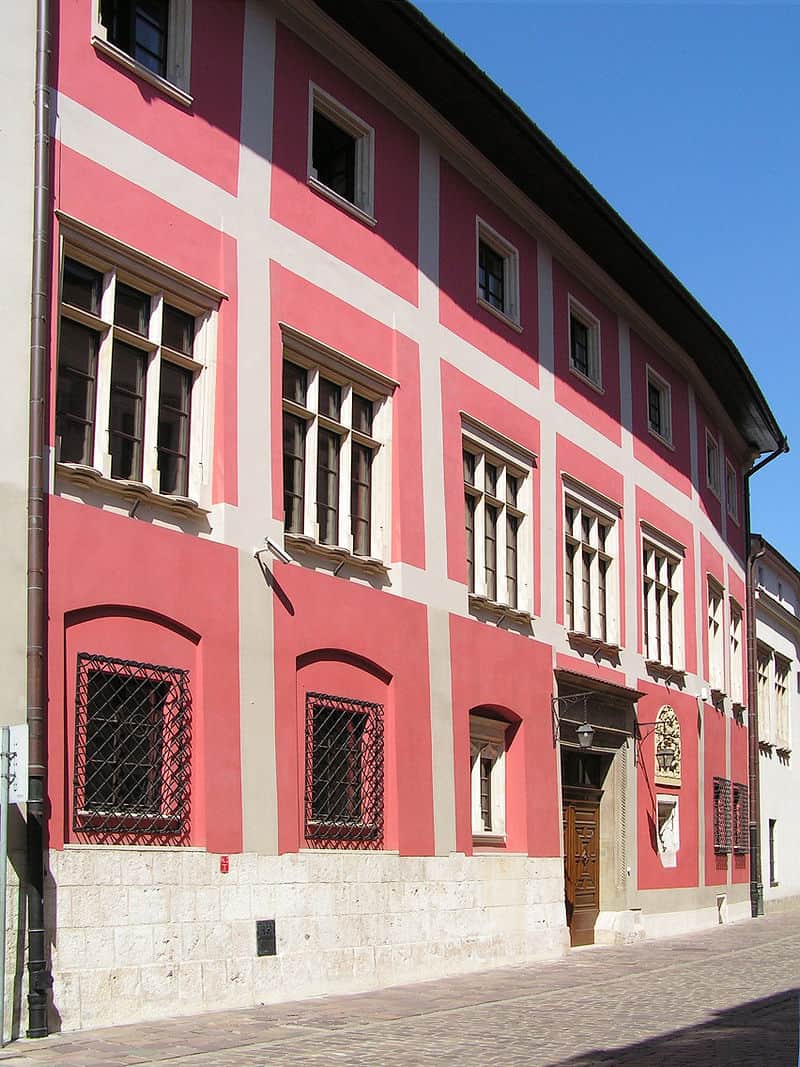
Today, the palace houses a museum with several notable paintings, portraits, and sculptures crafted from the 12th - 18th century.
Follow the artistic history of Poland from its Gothic phase, through the Renaissance era, and onto Neoclassicism and Romanticism.
Tickets start at 15 PLN for general admission, 10 PLN for reduced tickets, and only 1 PLN for kids and young adults from the age of 7-26.
Wawel Cathedral
Although this cathedral was originally constructed in the 11th century, it would also be demolished shortly after.
The replacement lasted until 1305 when a fire destroyed the building.
The structure sitting before you now was built in the 14th century, and it’s an excellent example of Gothic architecture.
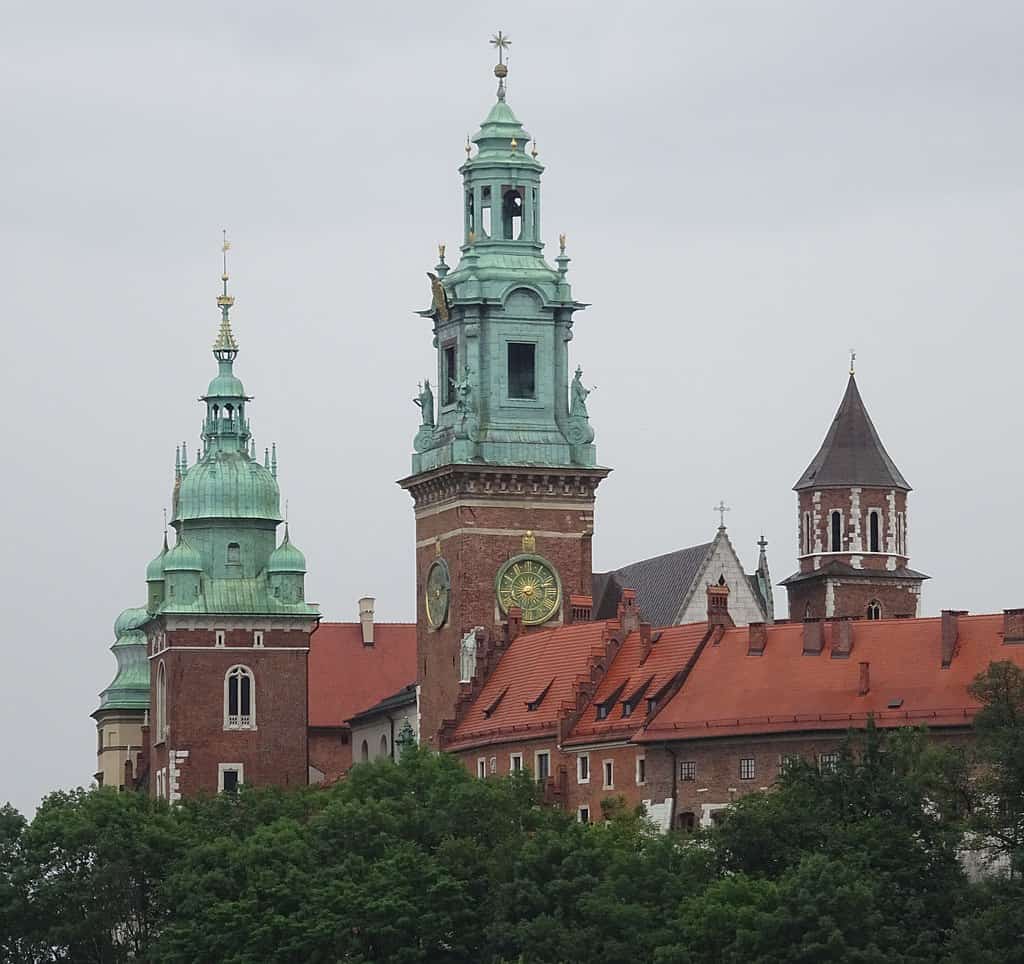
The crypt at Wawel Cathedral has been the main burial site for Polish monarchs since the 14th century, and in addition to housing the tombs of kings and leaders, it is also the final resting place of national heroes.
Today, there is a museum on site that was opened in 1978 by Pope John Paul II.
The museum contains works of medieval church art including paintings, sculptures, crosses, and more.
One of the more notable items here is King Sigismund II Augustus’ sword which was used in the 16th century.
Tickets are 14 PLN for general admission and 8 PLN for reduced prices.
Wawel Royal Castle
The hill upon which this castle rests dates back to prehistoric times and archaeologists have found evidence indicating that settlers have lived here since the Palaeolithic era.
Wawel Castle itself has only been here since the 14th century, but it is notable for having been the royal residence where kings and queens lived in Poland for many centuries.
Since it has needed repairs and expansions over the years, you can see examples of Gothic, Renaissance, Romanesque, and even early Baroque architecture on display.

The Wawel Royal Castle welcomes over 2 million visitors every year and it has been designated as a UNESCO World Heritage Site.
While you can walk around the grounds for free, you will need tickets to enter the museum which houses some of the best and most important paintings, sculptures, textiles, prints, and more.
Both the Crown Treasury and Armory and The Lost Wawel exhibit are free to visit on Monday, but from Tuesday - Sunday ticket prices for these and other areas range from 5 PLN - 25 PLN per person.
King Sigismund Chapel
One of the most incredible sites to take in at Wawel Royal Castle is the gold-plated dome of King Sigismund Chapel.
Many consider this one of the finest examples of the Tuscany Renaissance style of architecture.
This chapel was originally designed in the 16th century by Italian architect Bartolomeo Berrecci, and it houses the tombs of Sigismund II Augustus, Anna Jagiellonka, and King Sigismund I.

Both the exterior of the chapel and its interiors are quite beautiful, with red marble sculptures of the saints and an altarpiece designed by Hans Durer being just a few notable examples of the incredible detail put into this site.
Even if you don’t choose to go inside, we recommend checking out the gilded dome at least once from the exterior before you leave the castle grounds.
Giant Bell (Royal Sigismund Bell)
This is the largest of five bells that hang in the tower of the Wawel Cathedral, and it was cast in 1520 after being commissioned by King Sigismund I.
The bell weighs in at around 9,650 kgs and it’s around 9 feet in diameter. The clapper alone is approximately 365 kg, and it’s kept attached to the bell with 12 layers of leather belts.
If you visit during a Christian holiday, you can expect to hear this centuries-old bell ringing in a ceremony, and every time that happens, it’s thanks to a manual effort.
It takes roughly 12 men, 6 on either side, to ring the Giant Bell. Those who have rung the bell more than 50 times over the years are given a badge to symbolize their efforts.
Dragon's Lair
Found on the foot of Wawel Hill near the banks of the river Vistula, this site is known as the Dragon’s Lair.
Legend has it that there was once a dragon living here during the reign of King Krak.
According to the legend, the people of this city got tired of making offerings to the dragon and the king sent for help to vanquish his foe.
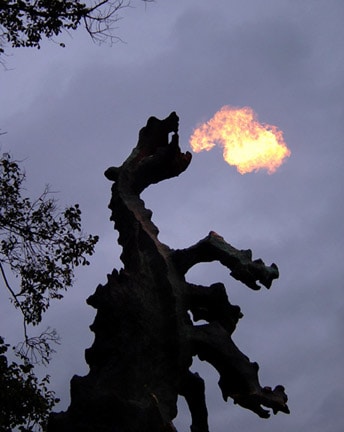
In this story, a young shoemaker by the name of Dratewka convinced the dragon to take an offering of a Ram filled with sulfur.
After eating it, the dragon drank so much water that it exploded!
Some say this is just a myth, a fairy tale told to young and gullible visitors, but it certainly sparks the imagination simply to think of the scenario that could have taken place here.
Free Tours in Other Cities
We offer free tours around the world. Here are just a few.
About The Author




